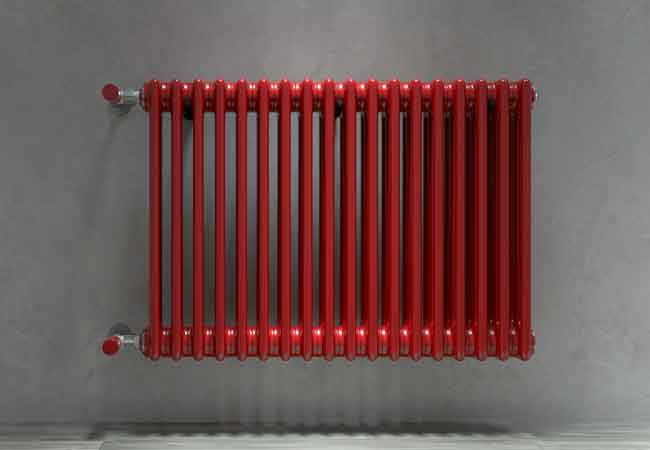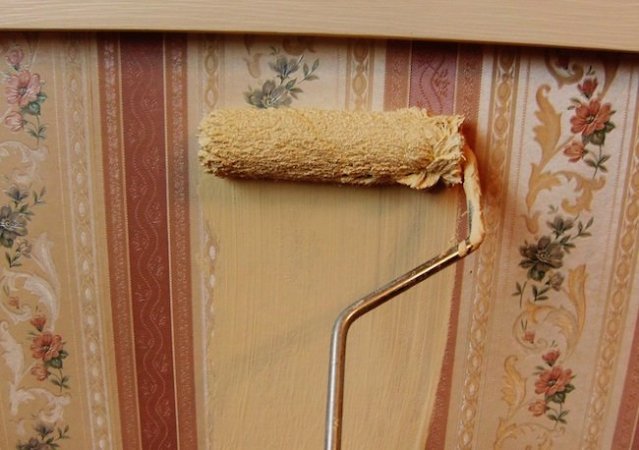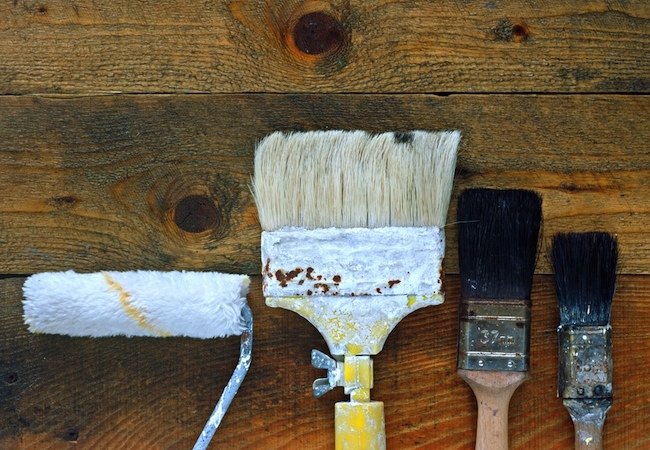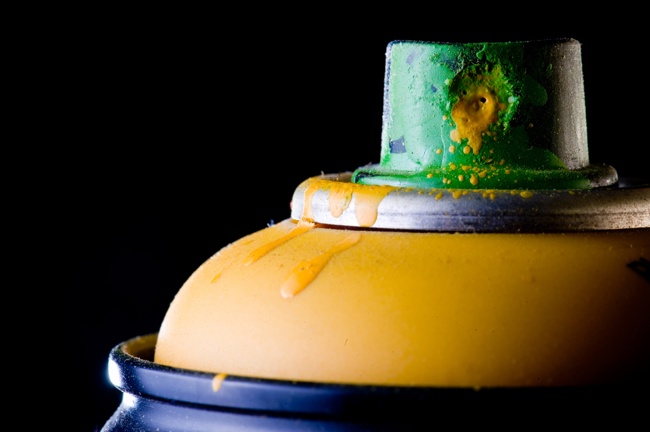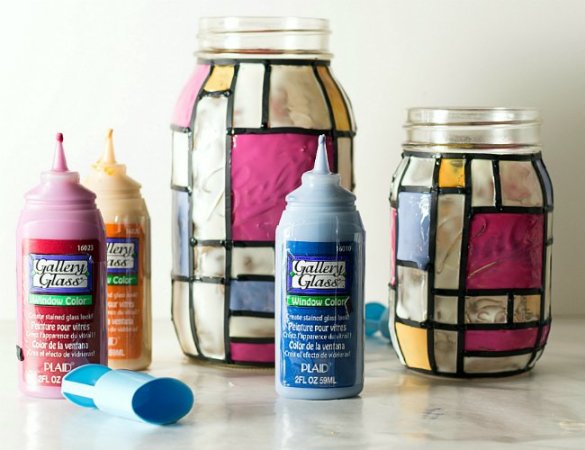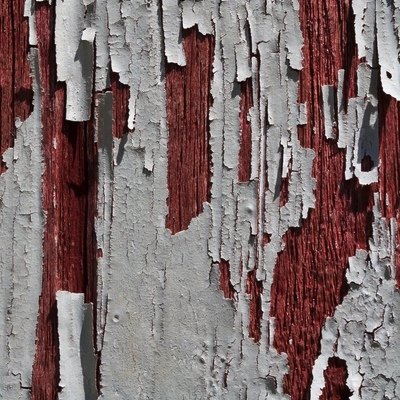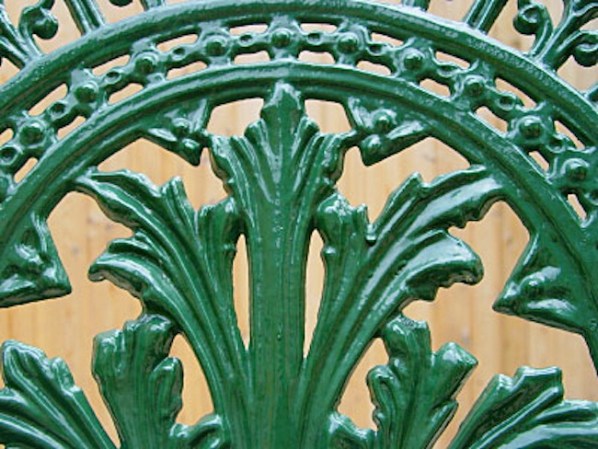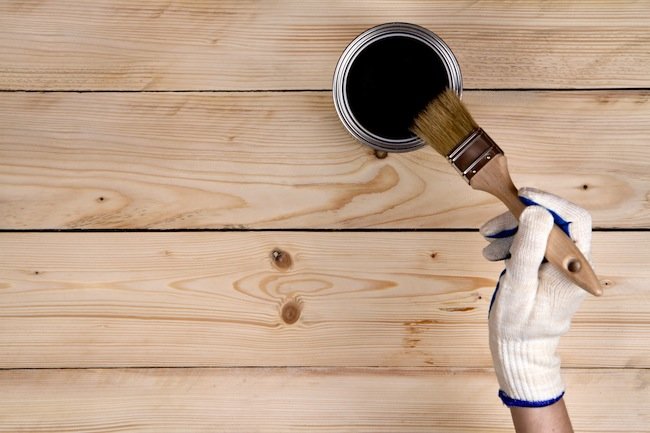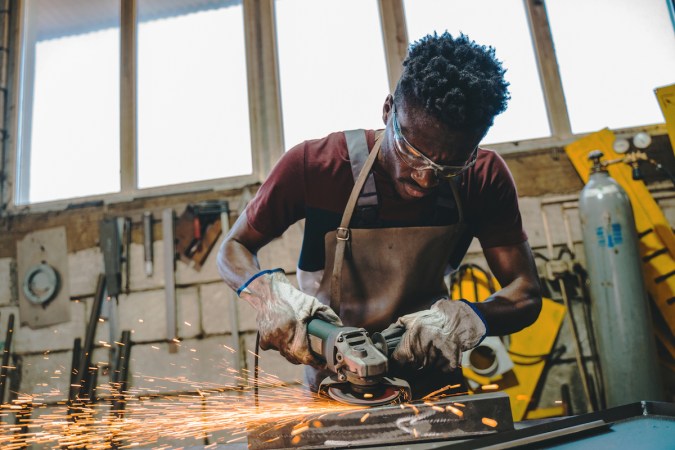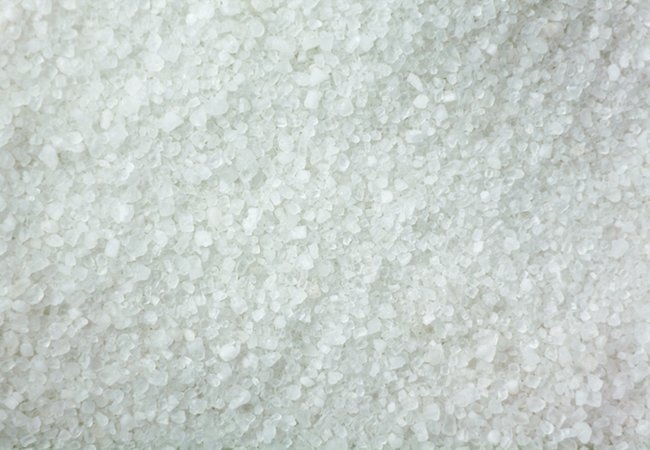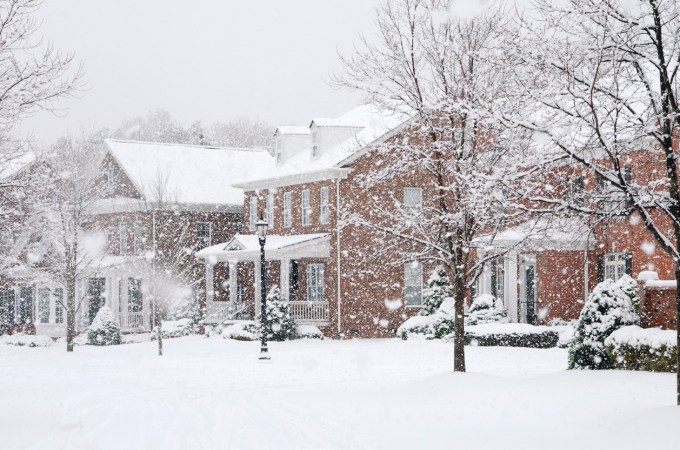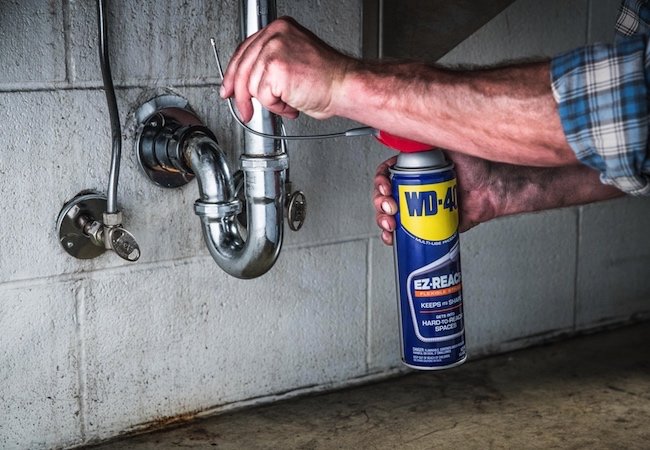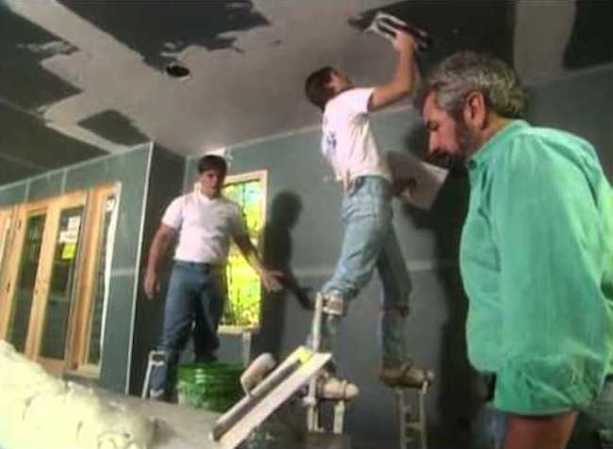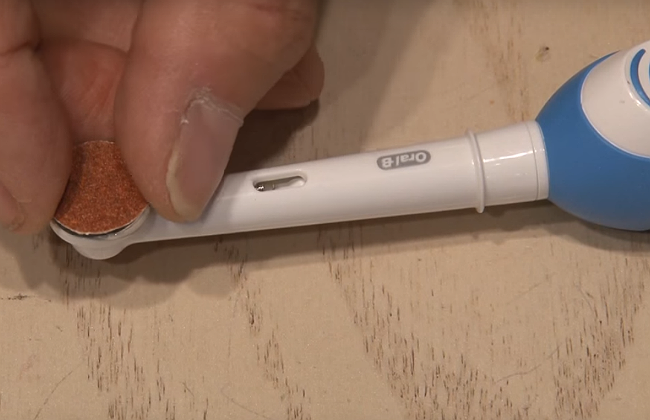We may earn revenue from the products available on this page and participate in affiliate programs. Learn More ›
Radiators have been keeping homes toasty for about 150 years. While yours probably doesn’t date back that far, it may well bear signs of age—rust, chips, or an original color that doesn’t suit your décor.
Fortunately, paint can roll back the years on any operational or non-operational, hot-water or steam cast-iron radiator; it can even dress up a unit made of mild steel, which is steel with a small amount of carbon. (Naturally rust- and fade-resistant stainless steel or aluminum radiators, on the other hand, aren’t commonly painted. Those metals are less likely to need restoration in the first place, and these radiators have a more rigid, less pliant surface that isn’t particularly receptive to sanding/painting.) Like any paint project, it all boils down to proper prep, materials, and technique.
Consider what color best suits your old-fashioned radiator—a traditional metallic or something that makes more of a statement—then read on for complete the details on how to paint a radiator. You can freshen up an old appliance into more of a focal point than an eyesore in just a weekend. And don’t delay: You’ll want to makeover this metal fixture sometime you can leave it turned off long enough to apply paint.
Tools & Materials
Bobvila.com may earn a commission from purchases made through these links.
- Masking tape
- Drop cloths
- Gloves
- Respirator
- Sandpaper
- Lead paint test kit
- Putty knife
- Tack cloth
- Cloth
STEP 1: Pick the appropriate primer and paint for a metal radiator.
For the best coverage around the curves of this fixture, prime and paint a radiator using cans of spray paint. Choose an oil-based aerosol primer and either an oil- or water-based paint that is labeled for interior use on metal surfaces. Depending on your radiator, look for the following attributes:
- If you want to paint a radiator that is non-operational, both the primer and paint that you use should be rust resistant.
- If you want to paint a radiator that will heat your home when temperatures cool, the primer and paint should be able to resist rust and also withstand the high temperatures that radiators generate. (Choose products that can withstand at least 200 degrees Fahrenheit, e.g., Rust-Oleum High-Performance System Enamel Aerosol Primer and High-Performance System Enamel Aerosol Paint—both available on Amazon.)
Choice in color will depend on the selection available in that specific type of paint as well as your intended effect. To help your radiator to blend in with its surroundings, for example, go for a shade that closely matches the color of the wall behind it; to make the radiator pop, choose a hue that contrasts with the background wall.
STEP 2: Ready the radiator.
If your radiator is non-operational, skip these instructions and move on to Step 3.
For an operational radiator, turn the control valve (located near the base of the unit) clockwise until it reaches the “off” or fully closed position and let the unit cool completely. Then, using masking tape, tape off the control valve as well as the air bleeder valve (located near the top of hot-water radiators) or either the steam vent valve (near the top of two-pipe steam radiators) or the air vent (on the side of one-pipe steam radiators). Paint can block vents and make valves difficult to turn, so avoid painting them on an operational unit.
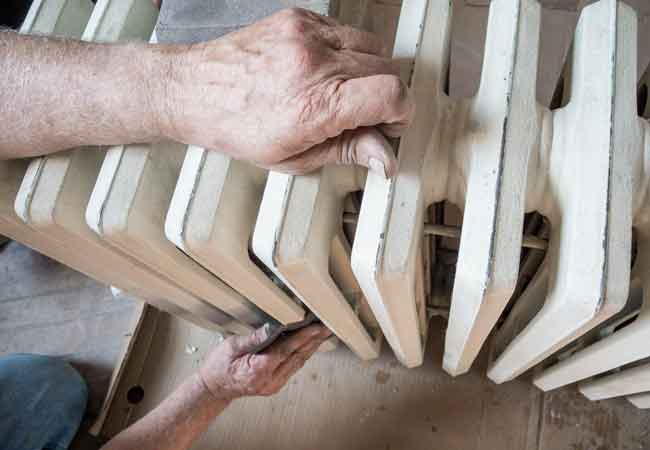
STEP 3: Prep the work area.
Apply masking tape to the wall around the perimeter of the radiator and lay drop cloths on the floor below the unit—you’ll want to do so thoroughly to protect the surrounding areas from overspray. Open a window in the room to improve ventilation while painting, and wear gloves and a respirator.
RELATED: The 8 Painting Mistakes Almost Everyone Makes
STEP 4: Sand the metal radiator.
Scrape a small, inconspicuous area on the radiator surface with a screwdriver blade and look for flaking to confirm whether or not it had been previously painted or varnished. If there’s no flaking, go over any pitting from heavy rust with coarse-grit sandpaper (e.g., 40- to 60-grit). Then sand all surfaces with fine-grit sandpaper (e.g., 80- to 120-grit) to remove light rust accumulations and achieve a smooth, paintable surface.
If you’re covering a radiator that was previously painted, first test the existing paint for lead with a lead paint test kit (available at home centers for $7 to $15). Paint on radiators in homes built pre-1978 are the most likely to contain lead. Caution: Never scrape, sand, or otherwise disturb the surface of a radiator coated in lead paint, as you risk releasing lead particles, which can adversely affect the central nervous and endocrine systems if inhaled or swallowed and can even be fatal with high levels of exposure. Wait for the results, then sand and/or strip away any cracking paint using one of these methods:
- If the test is negative, use a putty knife to scrape away cracked/chipping paint from any of the radiator surfaces. Then, sand the surface using the sanding technique recommended above.
- If the test is positive, have a professional refinisher remove the paint, or use an environmentally friendly paint stripper such as Citristrip (view on Amazon) to remove it. These products trap the lead in gel to keep lead particles from going airborne.
STEP 5: Wipe away the dust.
Glide a tack cloth over the radiator surface to remove sanding dust. Then, wipe down the surface with a water-dampened cloth to remove errant dirt and debris. Let the radiator air dry fully.
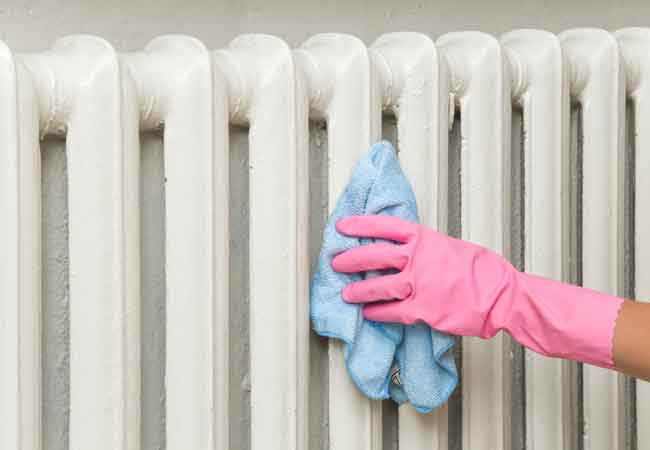
STEP 6: Spray a coat of paint primer on the radiator.
Holding the appropriate metal spray primer upright and at a distance of 10 to 16 inches from the radiator, spray an even coat of primer over all visible surfaces using a back-and-forth motion. Let the primer coat dry completely per the product instructions (Rust-Oleum High-Performance System Enamel Aerosol primer, available on Amazon, dries in 24 hours) before you move on to paint.
RELATED: The Dos and Don’ts of Spray Painting
STEP 7: Paint the radiator.
Employing the same technique used for the primer, spray an even coat of the high-temperature metal spray paint over all visible surfaces of the radiator using a back-and-forth motion.
Let the first coat dry for five to seven minutes (or according to the product instructions), then apply one or more coats to achieve the desired depth of color, allowing each coat to dry for five to seven minutes before applying the next. Applying the coats in relatively quick succession minimizes paint run-off in the previous coat. Let the final coat dry completely.
STEP 8: Clean up the workspace.
Remove the painter’s tape from the wall and radiator valves, and discard the drop cloths. If the radiator is operational, turn the radiator control valve counterclockwise to the “on” or fully open position.
